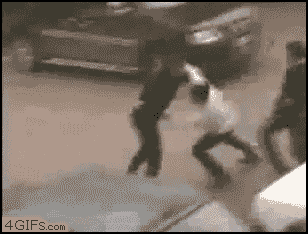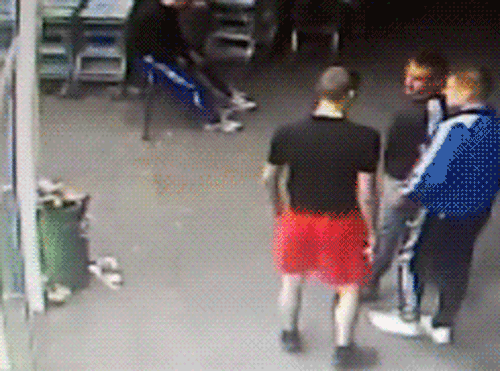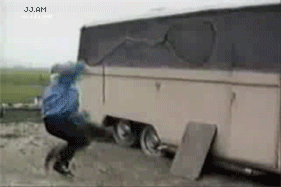
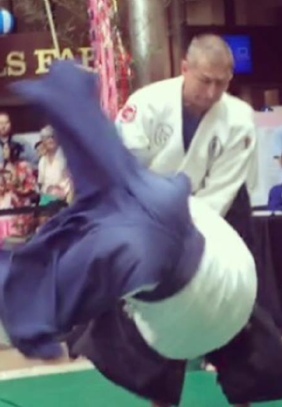
Inside Nihon Goshin Aikido ~ #53
August 5, 2017
In This Issue:
Inside this Issue:
1. Needed: More Dog Days of Summer
2. Dojo sub-flooring for safer Ukemi and the Football Helmet
3. Keeping the Pivot in the Pivot Take Down (Shihonage)
4. Articles of Interest
5. Growing Our Subscriber Base
I need more Dog Days of Summer! Having been ripped off by the too fast in passing summer break (which is only 2.5 months in SC even though summer weather lasts about 5 months), I am at least looking forward to the busiest time of the year for my business ~ which is helping parents reduce the cost of college tuition by increasing their student's SAT & ACT scores. As you can imagine the fall is a great time for that kind of business operation, but with it comes the end of summer, I generally am not happy.
If there weren't alligators clogging up every fresh water estuary in Florida, I'd move there ~ this way, it would nearly always be summer, and I could surf and waterski more often.
Somehow I need to promote alligator skin boots and belts ~ which would ramp up alligator hunting in Florida ~ which would free up thousands of water opportunities in Florida. If only I knew the guy in smokey back room who sort of runs the whole world..... George Soros? Does anyone have George Soros' phone number?
There's also "The Eclipse" ~ can't forget about that. They won't let you. It passes right through our town, but I'll probably watch it on TV ~ like I do when it snows. I have always wondered why people (myself included) invariably cut on the Weather Channel, and watch hours of TV documenting the very thing that is coming down in their own back yard. hmmmm pause pause pause...... Okay! That's enough self reflection for the month. Onward!
2. Dojo Sub-Flooring & Football Helmets
I was recently watching an ESPN documentary analyzing the repetitive concussion study that affects a lot of former NFL players. The intriguing nature of this particular documentary was its focus on soccer, and how repetitively heading a soccer ball might be just as dangerous or potentially even more dangerous than taking the hits in the NFL.
The documentary had my attention, because in recent years, I have developed this nagging suspicion that I am somewhat compromised. As a former soccer player with the reputation of being a pretty good ball winner in the air, I have probably headed a couple of thousand soccer balls, and have been concussed multiple times in the process. I talk to old teammates, and they can remember so many things about the games we played. I just have "flashes" of memories (like a certain situation without context), or no memories at all. I do not have a single recollection of the deep run we made through the Conference Tournament my sophomore year in college. The junior year is also troublesome. I can't remember hardly anything about that year, but I have pretty strong memories of the games in my senior year, and our run to the Conference Championship game. That year, I was hospitalized for a few days due to a concussion that occurred during a match against our cross-town rival, The College of Charleston. About 30 minutes after the game was over, I could not even remember that we had played a game, much less the fact that I had smashed a shot off the cross bar that would have tied the game in the second half.
More and more, I am reminded of the fact that I am missing significant memories ~ even outside of soccer. I once read in a "You know you went to Our High School if..." Facebook thread, and came across "You remember Jonathan Wilson getting in trouble at school for...." Oddly, I had no memory of the incident. I even expressed doubt that it had even happened, and then many of my high school buddies, and one teacher jumped in ~ pointing out that it had happened. A few weeks ago, my younger brother was relating to me a situation from our early teenage years that I should remember for its humor alone ~ but I have absolutely no recollection of it.
The documentary got me to thinking about our Judo break-falls, and how many times I've had concussion symptoms from them. The simple truth is: You don't even need to hit your head. Sometimes the "jar" you feel from a solid break-fall or simple contact from the Slap to the Side of the Head is enough to do damage.
Heck, one time I ended up in the BB&T parking lot with no idea how to get home after an aikido training session. I had to call my wife for help. This particular situation was caused by an over zealous nage who slammed his hand down on the back of my neck while executing the Wheel Throw during a Green Belt Test. First time I ever threw up due to concussion symptoms.
I am now highly susceptible to any contact on the back of my head, and I make it a point to inform my uke before taking falls on Slap to the Side of the Head, Wheel Throw, Pulling Head Down Underneath the Arm, etc. In my situation even careless contact to the back of the head often causes issues.
Is it possible that the damage from repetitive ukemi could be similar to damage caused by other types of sports, and possibly stacking more damage on top of damage I have already experienced.
Furthermore, at what point do you stop taking ukemi altogether? I have heard several people say something like, "You only have a certain number of break-falls in you."
Generally speaking, I want to extend that number. I prefer being round instead of flat when serving as uke, so I roll, rather than break-fall, whenever possible. I am even more intrigued with the soft ukemi options that Donavan Waite has been working on disseminating through Aikikai (but I can't do them). The guys at Aikido of Charlotte have a class every Tuesday on developing soft ukemi. It is amazing what they have been able to accomplish in 6-8 months of once a week training focused on soft ukemi.
My sensei has been a big fan of being a "sticky uke" ~ where uke tries to "hang on" to nage to reduce the trauma of his fall. This is easy to do, and it helps a lot.
It's funny we don't really stress the ukemi too much in our dojo, but everyone is thrilled to see Will Robinson take one of Sensei Carter's Pivot Take Down Throws, and secretly wishes they could take the same fall. See video for evidence.
In an attempt to cover all my bases in an effort to extend my training shelf-life, I have also become highly appreciative of quality sub-flooring at aikido specific dojos like Aikido of Charlotte (NC), Aikido Center of Atlanta (GA), and the Bond Street Dojo (NYC).
So ~ why should ya'll old Senseis worry about this, when many of you cut your aikido teeth rolling on old, worn out mats that were not even anchored to the floor, or had empty spots in the middle where no padding existed at all (Old School Spartanburg, SC Dojo Aficionados all say, "Amen!")?
Well because you were young and didn't know better, and now that you are older, you might not take ukemi with the regularity that your students do. A floor like that old Spartanburg floor would kill me if I had to roll on it at my present age of 49.9166, and I am not the oldest student in my dojo.
Think about the the technological advancements in a football helmet between 1960 when they did not even have facemasks, and try to see our dojo floors through the same lens. Those football helmets have gotten better and better every decade to make the sport safer. How many advancements have we made in our flooring? In the interest of enhancing the safety component of our dojo floors, we probably also have similar capacity for upgrades spurred forward by technology.
Safer training extends student life ~ and students are what we all need to make the art grow.
How to add an inexpensive sub floor at the dojo is probably a story for another day, but I think this is a topic that is potentially ripe for a Sensei driven round table / best practices discussion.
Perhaps, we could post formulas of sub-floors that were appealing, etc. To spur on that discussion, here are two examples of interesting sub floors:
1. I read about a guy who used old phone books to create a quality sub floor for a garage dojo.
2. Rumor has it that Sensei MacEwen once used old automobile tires as a sub floor at one of his early dojos.
Aikido Center of Atlanta has a great sub-floor. I have had opportunity to train on that floor twice (including once this Spring with Yamada Sensei, and incidentally I did not get kicked off the mat). Anyway, the floor is unbelievable.
Best of all, they shared their sub-floor formula with me in a pdf file (that I have not shared here), but I will summarize the working pieces.
- Use wood screws to attach 2x4s to a 4x8 sheet of 1/2 inch plywood to make a rectangular frame that is flush with the edges of the plywood so there are no weak spots on the edges of the frame.
- Inside the frame, attach three 2x4s horizontally spaced across the frame for additional support.
- Place the sub-floor down with the plywood side up.
- Create enough plywood frames to cover the dimensions of your mat space, and position them on the floor with the plywood side up.
- Lay the mat on top of the plywood frames.
- Use wood screws to attach 1x2s around the outside border of the space to connect all the frames together, and lock the frame into place. This also creates a natural border for your mat.
If you are using a one piece vinyl cover on top of your mat, the cover can be secured/ anchored by a variety of options.
Here is a picture of Aikido Center of Atlanta's outside frame. Note how high it is off the floor. If anyone ever has a chance to train there, I would recommend it for the sheer joy of rolling on the floor.
As to cost: The cost of 1/2 inch plywood is relatively cheap, and untreated 2x4s are inexpensive also. Out of curiousity, I went to Lowe’s website and priced a 4x8 platform (which consists of 32’ 8” of 2x4 and a 4x8 sheet of half inch plywood. It came in at just over $30 per platform.
How many platforms do you need? Well calculate the square footage of the training space (length x width), and divide that number by 32 (the amount of square footage of a single sheet of plywood). The result represents the number of platforms you would need. I suspect that much of the cost would be willingly absorbed by student (possibly a "mat upgrade fund").
3. Keeping the Hard Pivot in the Pivot Takedown
The timing of the hip turn in Pivot Take Down (Shihonage) is so crucial. I like to think of it as a "snap" ~ you execute the 180 degree pivot immediately after entering underneath uke's elbow ~ and the throwing arm is extending and dropping to the floor with the pivot. The explosive nature of the whole technique rests on a knife's edge whose cutting power comes from the hip movement off that turn. In my mind, the explosiveness off the pivot has a very distinctive stylistic difference which is unique to Nihon Goshin Aikido. It gives the technique such an authoritative feel relative to other aikido styles.
Disclaimer: Obviously, your Sensei has his own set of markers to make the Pivot Take Down pop. These may be different than my Sensei's set of markers, or my “simply sho-dan” impressions. I'm sure of this though: if you do it exactly the way your Sensei tells you to do it, you'll be fine. There may be different conceptualizations of how to explain the throw, the mechanics of the throw are generally the same.
4. Articles of Interest:
Master Shodo Morita’s Signature Circle ~ The Yang Blend
Let's meet together on the mats, and soon.
All the Best,
Jonathan Wilson
NGAexperience.com
PS: Please forward this link to your Nihon Goshin Aikido training buddies and ask them to subscribe to our free monthly newsletter.
Unless otherwise stated, the author’s views, musings, and opinions do not necessarily reflect the attitude of leadership within any of the various Nihon Goshin Aikido associations, or unaffiliated Nihon Goshin Aikido dojos.

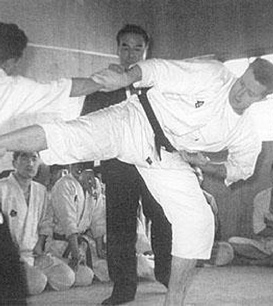

2014 - 2021 ngaexperience.com



The best time to plant a tree was 20 years ago. The second best time to plant a tree is today.
Click here for a list of Nihon Goshin Aikido Dojos ~ and begin training with us today!
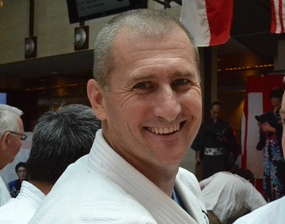
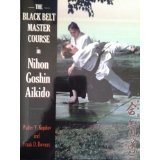
This is Sensie Carter’s new dojo promo video for the dojo I train at in Lexington, SC. You can see Will Robinson take a high breakfall off a Pivot Take Down at the very end of the clip (@ 51 seconds)
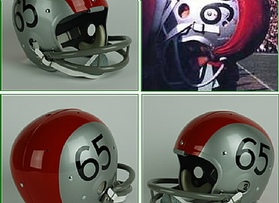
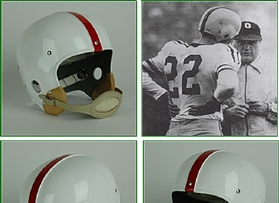
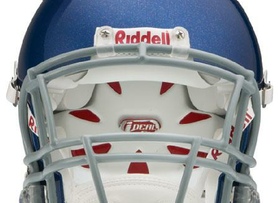
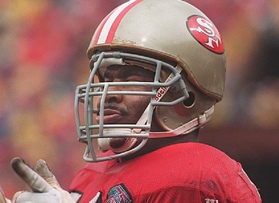
A pictorial history of the plastic football helmet. They were originally leather, but look all the technical innovations they have made to improve safety between 1961 and the modern Riddell helmet.
Could our innovations with quality sub-flooring keep pace?
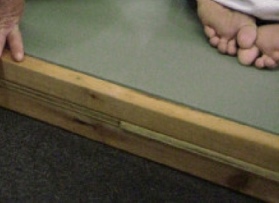
This is a picture of Aikido Center of Atlanta’s sub floor.
You can see the 2x4 support frame closest to the ground.
The thin middle layer is the 1/2 inch sheet of plywood that the mat sits on.
The mat is framed in by the outside border which is a 1x2 on top. It keeps the mat in place and connects the individual plywood frames together so they stay in place.
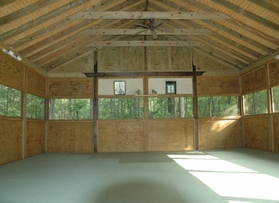
Mats aren’t everything.
This beautiful dojo sports top quality Zebra mats, but they are laid directly on top of the floor (at least they were when I trained there). The result is a top quality mat that feels hard and somewhat unforgiving.
